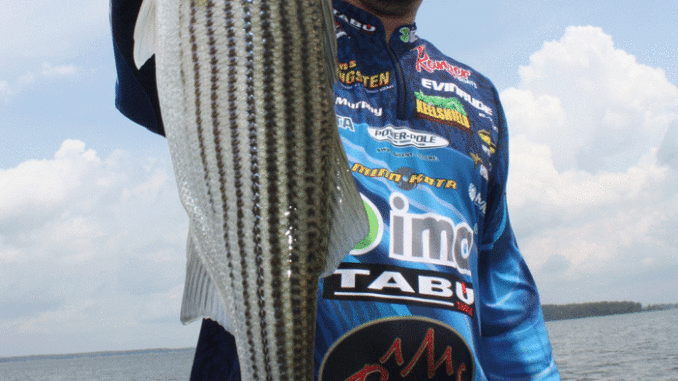
May brings out the best in this Columbia-area reservoir. Here’s your guide to spots for everything from largemouth bass to channel catfish.
Folks who fully embrace a mindset of “You can’t have you cake and eat it, too” haven’t spent time fishing at Lake Murray. This 50,000-acre impoundment of the Saluda River offers fishermen “best of both worlds” opportunities. While Murray has definite highland impoundment characteristics — clear water, a structure-rich deep lower main body and plenty of steep banks — it also offers outstanding-shallow water fishing in a complex network of creeks and coves.
Michael Murphy of Gilbert also likes the fact that Murray offers excellent fishing for a variety of species. Although he earns his living a tournament bass angler and by doing marketing work for tackle companies that cater mostly to bass fishermen, Murphy also enjoys catching stripers, bluegills, crappie and even catfish, and when he’s free, he will take clients on guided fishing trips.
May brings many good opportunities to Lake Murray, no matter what kind of fishing an angler likes to do. Bass fishermen can find late-spawning fish in a few areas, but the best action often comes from post-spawn bass that are feeding on spawning shad and bluegills. Of course, the spawning bluegills serve up their own brand of fun to anglers who pursue them instead of the bass that are eating them.
Meanwhile, the lake’s striped bass, which generally aren’t huge but are very abundant and brutally strong, are subject to the same artificial lures that bass fishermen throw in many areas. Other times of the year, Murray’s stripers stay deep and are caught mostly by drifting or trolling with live bait, so May’s lure-casting opportunities provide a fun alternative.
While good spots are spread from the backs of pockets to the ends of main-lake points, most of the best fishing this time of year occurs in relatively shallow water and either around visible cover or over structure that is easily recognized by a hazard buoy or by the visible slope of a point. Relying on Murphy’s experience, we’ll look at 10 specific spots that promise to serve up fine fishing this month.
1 — North Shore near Bear Creek
34 04 628N/81 21 433W
A series of humps and hardbottom points along Lake Murray’s north shore near Bear Creek provide perfect habitat for spawning shad, and soon after shad show up to spawn, the bass and stripers arrive ready for the feast.
“First thing in the morning, if the wind is blowing, they’ll be right on top of the structure in one to five feet of water,” Murphy said. “Put the boat over five to 10 feet and cast across the shallow structure.”
Later in the day or when less wind is blowing, Murphy will stay a little farther off the same structure and concentrate on the edges. His first choice is a topwater plug such as Ima Skimmer, but if the fish won’t quite commit to the top, he’ll drop down slightly in the water column with a soft-plastic jerkbait. Through the middle of the day and farther into the season, he’ll drag a Carolina rig across the same structural features and will pull his rig off the edges.
2 — Bear Creek Point
34 05 000N/81 20 524W
A very prominent point at the mouth of Bear Creek has an island just off its end and a private boardwalk connecting the mainland point and the island. The island is actually a high spot on the same structure, and the point connects the mainland and the island beneath the surface. Another excellent hardbottom area, this point connects largemouth spawning pockets with deeper water and serves as an important post-spawn transition spot.
“The entire point is loaded with rock,” Murphy said. “It’s a spot they really get on during May.”
The point stretches out to the main channel of Bear Creek. Depending on the time of the month and recent weather, Murphy might fish this point at the extreme shallow end along the edges of adjacent shallow pockets, at the far end by the creek channel ledge, or anywhere in between.
3 — Ballentine
34 05 721N/81 14 035W
The pockets behind a few small islands near Ballentine stand out as some of the last areas where largemouth spawn on Lake Murray, so sight-fishing can remain good through May. Murphy will look for beds and for cruising fish. He’ll also work these areas with a floating worm, targeting both spawning fish that he won’t visually locate and post-spawn fish that have remained in the area to feed.
Bluegills spawn in the same pockets and use the cover around the island, and May is prime time. The bluegill spawn offers a double benefit to fishermen. Obviously, the spawning pockets provide good opportunities to target large bream and find good spring action. An additional benefit is that big bass that have just finished spawning and are ready to return to regular living often will hang around to feast on the concentrated bluegills.
“Fish docks and brush, and don’t overlook little private boat ramps for the bass,” Murphy said.
4 — Lake Murray Marina pockets
34 07 056N/81 15 329W
Speaking of good places to throw a floating worm during the spring, the pockets on both side of the Lake Murray Marina & Yacht Club hold big numbers of bass that relate to shallow cover during May.
“This is a very good place for fishing docks that time of year,” Murphy said.
The fish tend to stay way up under the docks, so whether you fish a floating worm, a jig or some other offering, refining your skipping skills can come in very handy. Murphy also likes to flip or pitch a jig around dock supports and brush.
For crappie and other panfish, which get up under the same docks, you’ll have to call on your dock shooting skills instead of skipping skills and shoot a lightweight jig up under the same docks.
5 — Point at Mouth of Jakes Creek
34 02 012N/81 13 987W
The main point at the mouth of Jakes Creek and a series of nearby points together provide good hardbottom structure for spawning shad and therefore offer excellent bass and striper fishing this month. The main point also provides an easy travel route from spawning pockets to the deep water at the mouth of the creek and therefore tends to be a good staging spot for post-spawn largemouths.
“It’s best when the wind is blowing across it,” Murphy said. “That concentrates feeding fish. Timing is also very important, here and at other shad spawn areas. Sometime you might have to hit a spot like this three or four times before you’ll find the fish feeding, but when they do bite, you might catch one after another.”
Murphy typically throws either a topwater lure or a subsurface shad imitation such as an Optimum Swimbait for fishing any of these points.
6 — Back of Jakes Creek
34 01 210N/81 13 909W
Similar to the Ballentine area, the pockets in the back of Jakes Creek often attract late spawning largemouths. Meanwhile, those fish that have already spawned tend to stick around because the bluegills spawn in the same pockets during May.
“The bluegill spawn attracts the bass, so you can fish a ‘bluegill pattern,’ for big largemouths, but it’s also a good place to fish for the big bream,” Murphy said.
Bass often spawn around dock posts and brush. The bream spawn primarily around clusters of flooded bushes, Murphy has noticed. Because of the bluegill spawn, he definitely favors darker colors that suggest bluegills over shad-imitating color patterns in this area.
7 — Hendrix
34 01 873N/81 19 868W
A primary point and several secondary points and nearby humps in the area known as “Hendrix” collectively form one of the best places along Murray’s south shore to capitalize on the shad spawn and catch largemouths and stripers. The shad spawn begins a little later in this area than across the lake, typically starting around mid-May instead of at the beginning of the month, and continuing through much of June.
Stripers and largemouths cruise the tops of rocky points and humps, especially when the wind blows steadily, and they will ambush topwater lures or shallow-running shad imitations. As a general rule, the more the wind blows, the shallower the fish will hold and the more aggressively they will feed.
“Pay attention to the direction of your presentations,” Murphy said. “Often you can fish from one side of a point and get absolutely nothing, and then fish the same structure with the same lures from the opposite direction and catch several fish.”
8 — Hollow Creek
34 03 111N/81 24 013W
Loaded with docks and smattered with other shallow cover, Hollow Creek offers some of the best shallow-water bass fishing on Lake Murray.
“You can catch fish shallow in here year-round,” Murphy said, “but during the spring, it’s especially good.”
Casting a floating worm or a shallow-running crankbait and keeping it close to as much cover as possible often produces good bass action during May. For bluegills, trade the bass gear for an ultralight outfit and cast a small jig or spinner around brush and docks. If you’re catching bluegills, you might want to keep a small dark-colored bass popper or a bluegill-colored crankbait handy and a cast for bass from time to time.
Late in the month, some bass — and plenty of stripers — will also hold over the points at the edges of the same pockets in Hollow Creek.
9 — The Gap
34 04 407N/81 24 717W
The gap refers to the narrow area near Dreher Island where the Saluda River slides between the island and the lake’s south shore. It’s where Lake Murray really changes from a riverine system to more of a lake. Good current, both from the river flow and from funneled wind, tends to concentrate and position feeding largemouths and stripers in this area, creating fun fishing opportunities
A color change that commonly exists in this area also has a big impact some days, with fish holding in the transition area and actually relating to the color change as structure. The fish also tend to hold shallower and tighter to the cover in the more stained water than immediately below it in the clear water.
Look for baitfish with your electronics because the fish might be out in the open if there is school of baitfish and decent current is pushing through the gap. That said, don’t overlook shallow cover in pockets on either side of the gap, especially in the more stained water, and look for fish off the ends of points that extend from the mainland and island.
10 — Spence Island to Dam
34 03 560N/81 16 430W
A look at May hotspots would be incomplete without noting that in recent years, Murray has emerged a catfishing hotbed. In the lower main lake, especially, good fishing occurs every evening from mid-spring through the end of summer.
Murphy will pick from one of many islands or humps and will get set up just before dark, anchoring so that he is able to put his baits in five to 10 feet of water.
“If you can see the dam and you have the right bottom depth, you probably are in a good spot,” Murphy said.
Murphy generally will fish until an hour or so after dark, and that’s usually plenty of time to catch several catfish. He catches mostly channel catfish in the 5- to 10-pound range, but much larger cats are a legitimate possibility any given evening.
Murphy uses cut shad or herring, fishing on the bottom with a Carolina rig and his regular bass tackle.
To contact Michael Murphy, visit http://michaelmurphyfishing.com/.

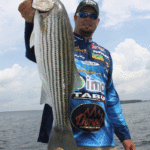
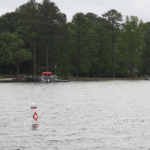
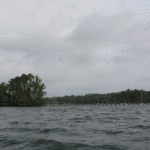
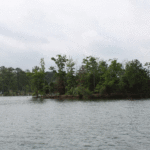
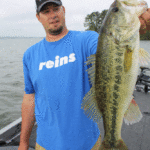
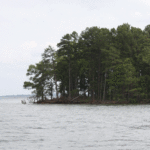
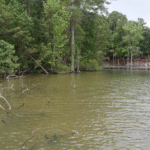
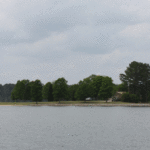
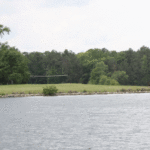
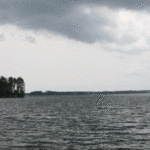
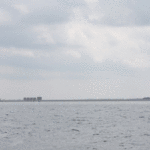
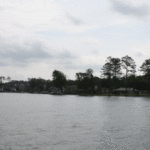

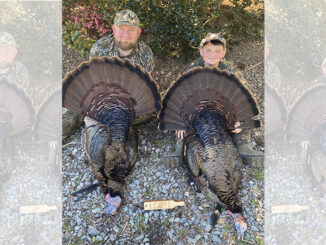
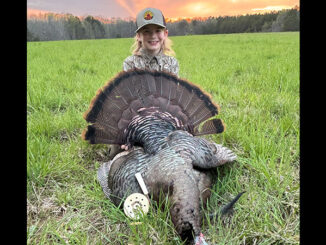
Be the first to comment